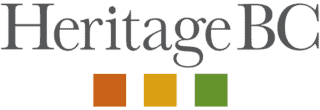With so much media focus on systemic racism, how much attention has your heritage organizations paid to who is involved, and in what roles? Do your Board members, staff and volunteers actually reflect who lives in your community? Is what you say and what you do at the decision-making level actually in step with today’s realities?
What does “the right to cultural identity” mean in terms of recruitment, hiring practices, decision-making, programs, services, and exhibits? Sure, many heritage presenters now include pre-contact history exhibits – do yours go beyond archaeological artifacts? Have Indigenous people actually designed and presented these exhibits, or has consulting a few individuals and inviting Chief and Council to a grand opening been enough?
Every meeting now seems to start with “we acknowledge our presence on unceded Indigenous territory…” It often rings very much of tokenism, something to say before we get down to the important discussion of budgets, reports and problem-solving. Start by scheduling time to actually read the UN Declaration of the Rights of Indigenous People (download an ‘In Brief’ version here) and the Truth and Reconciliation recommendations (here). Consider adopting them and reviewing your Bylaws and policies and procedures to ensure your practices reflect these values. Ensure that those discussing the issues are diverse and reflective of your community, not just your current Board and staff. Go a step further and commit regular time and effort to make sure you are working toward these values. Include those that are most relevant in your five-year plan with measurable action and reporting on progress.
In particular, please pay attention to who participates in decision making. Actively seek diverse people, views and opinions to ensure your policies and programs positively present and involve people of every ethnic group in your community. It takes more time. But as the demonstrators continue to remind us “white silence = systemic racism”.
Cultural identity, of course, goes way beyond just Indigenous peoples. When you exhibit the history of Chinatown in your small community, have local Chinese Canadians designed, chosen the content, and interpreted their stories? Or have they simply been asked, “Is this OK?” When your exhibit focuses on immigrant communities and their contribution, who chose the photos, stories, and other important themes? Who was actually paid to design and present the exhibit?
Attending a number of on-line AGMs recently, I note that attendees are almost exclusively older, white people; most groups seem to achieve some gender balance, but it is rare to see active participation of members of the many diverse ethnic peoples who make up the population that your organization apparently represents. Fifty years ago, I would be the only woman on a Board of Directors or management team and elected women in politics were rare. After decades, even our federal government now strives for gender equity.
It is time to take active steps to ensure inclusion and diversity in all our organizations – starting with a discussion of how systemic racism applies to your organization and to you personally.
Sharon Syrette
Sharon Syrette is a writing guide at Lifetime Learning Centre in Mission, with an active group of Memoir and Family History writers. She is an active volunteer with the Aboriginal Genealogy Network (AGN), a cooperative group helping families to trace their roots and connect with relatives. AGN is currently working on a local history that tells the journey of Sto:lo Elders in the 1970’s, who served an ‘apprenticeship in linguistics’ to record the previously oral Halq’omeylem language. The written alphabet and writing system, a dictionary and Sto:lo Sitel curriculum provides the basis for today’s teachers and educational approach to cultural teachings.
–
